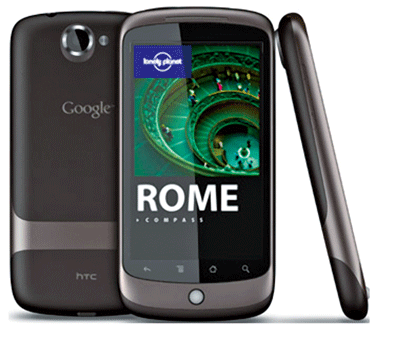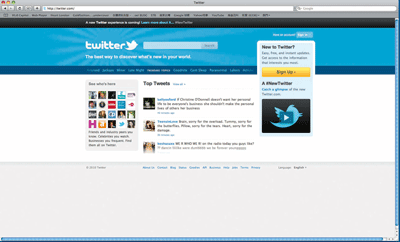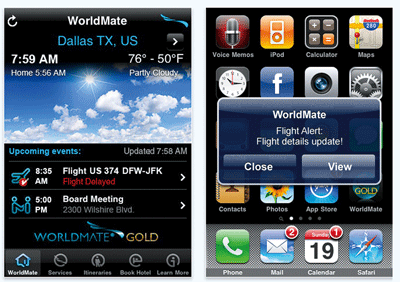In today’s fast paced society, we are often bombarded with vast amounts of information, causing much difficulty and headache in decision-making. In travelling alone, one may find oneself inundated by airline and hotel check-in printouts, frequent flier and hotel loyalty cards, currency exchange rates, travel itineraries – you get the drift.
Thankfully, sifting through the clutter has become more manageable with the rise of interactive websites and applications, a phenomenon that some call Web 2.0. How the term started has generated much debate, but its popularisation is likely to have begun at the Web 2.0 conference by O’Reilly Media and MediaLive International, both well established in organising technology industry events.
Quite simply, many people are living the Web 2.0 life when they blog, go on Facebook or write a review on Trip Advisor. It signifies a turning point at which people no longer only expect to receive information passively on the internet. Everyone can be an information provider or a commentator. The emergence of smartphones, BlackBerry and iPhone has only accelerated Web 2.0.

Businesses are quickly realising the trend and tapping into its potential. Airlines and hotels are two categories of companies that have done this well. They adopt Web 2.0 technologies to create a simpler, more convenient way of life on the road, or what marketers call Travel 2.0.
The 2010 Embassy Suites Hotels’ Business Travel Survey found that 48 percent of young business travellers in the US aged between 21 and 34 years old have incorporated Facebook into their decision-making process before travelling.
Closer to home, Yeoh Siew Hoon, owner of this year’s Web in Travel conference in Singapore, a leading annual forum for Asia’s travel distribution, marketing and technology sector, noted that travel attitudes in Asia are also evolving. In an interview with website eTravel Blackboard, she pointed out that the new Asian traveller looks for value and uses technology extensively to seek information in comparing prices and reading opinions about products or services.
“Game-changing gadgets such as the iPhone or the iPad, social networks such as Facebook and travel review sites such as TripAdvisor are just some of the factors that are influencing traveller behaviour across the region,” said Yeoh.
With economies of scale resulting in lower prices, smartphones have fast become commonplace, with adoption rates growing exponentially in Asia. Strong demands are seen in China and India. Market research company IMS Research found that Asia accounted for 33 per cent of smartphone shipments in 2009 and Google’s mobile advertising wing, AdMob, noted that smartphone penetration reached 40 per cent across Southeast Asia by the end of 2009.

Airline, hotel and IT industry players have responded in a big way to this trend by introducing smartphone applications and launching initiatives, in part to help advertise their products and services, and also to ease the clutter all too much a part of life of the business traveller.
Below, we document recent and notable tech products to aid in your quest of living the Travel 2.0 life.
LET’S SOCIALISE
You can bet that someone, somewhere out there has something to say about a particular hotel they stayed at or airline they flew with that might be on your radar. And increasingly, you can listen to these opinions from different corners of the world the very second they are being expressed.
Twitter is a valuable tool to utilise for pre-trip planning. By searching for a hotel or airline brand that you might be using on your trip, you may find tweets recounting first-hand experiences with the service. Notable, also, is how Twitter is increasingly becoming a mode to obtain news.

Take the Icelandic volcano disaster of early this year, for example, tweets were used as a means for airline carriers like Lufthansa, Air Baltic and British Airways to update customers about airline disruptions during the event.
Remarkably, tweets were also used by travellers to share information on alternative ways to get to various destinations, and as a mode to offer each other assistance, such as a bed to sleep during the crisis.
In less chaotic times, Twitter is a great tool for finding out more about a destination and, if you’re inclined to, for making friends with the locals through location-based tweets – posts that are tagged with the person’s current location.
One way to do this is to search for a keyword, like your hotel, for example, then select the “Tweets near you” option to see messages other users have uploaded close to your location. You can reply to a user and start communicating. Get creative when searching – try a national dish, the country’s shopping belt or even search strings like “alone in…” – you might find someone sharing similar interests or situations with you.
Couchsurfing.org is a website for travellers who need a cheap place to stay, but there are useful features a business traveller can tap on to get a fuller experience of the city he or she is visiting. A profile is easy to sign up for, and once there, you may find notes from users who indicate that they’re available for “Coffee or a drink”.
BRAND APPLICATIONS
Asian carriers have stepped up efforts in introducing applications for various smartphone operating systems. Cathay Pacific, for example, relaunched its CX Mobile app for Apple portable devices, BlackBerry and Symbian handsets in July incorporating flight schedules, flight status checks and bookings management. Another handy aspect is its mobile paperless check-in function that issues a barcode to your handset which can be used at immigration and boarding.
Other Asian carriers like Cathay’s subsidiary Dragonair, Asiana Airlines, Malaysia Airlines, Singapore Airlines and, most recently, Korean Air are riding the smartphone wave, too, by launching applications for various operating systems.
Hotel groups like Four Seasons, Hilton Worldwide and InterContinental Hotels Group have similarly created applications that allow you to look up hotels, manage bookings, search for available rooms, find special offers and review loyalty points. InterContinental Hotel Group’s (IHG) Priority Club Rewards iPhone app, for example, uses the handset’s global positioning system (GPS) function to give direction and show nearby IHG hotels.
If your hotel or airline of choice has yet to come up with an application that you can use on-the-go, we offer you this fuss-free and virtually cost-free option – your mobile phone’s camera. Snap pictures in good lighting of your hotel’s address in whatever language, or reference codes for airline and hotel bookings. Applications like award-winning Evernote, available free for Apple devices, Android, Blackberry and Windows Mobile devices can help consolidate these snaps and index them for you for easy searching later on.
TRIP APPLICATIONS
Consider downloading free trip planner applications like TripIt and WorldMate, which help plan and organise your travel itinerary and seamlessly sync it to various smartphone operating systems.

All you need to do with TripIt is forward airline and hotel confirmation emails to a designated address. The application will then consolidate and organise relevant information for you, including weather forecast and details on the destination. If there are flight delays, cancellations or gate changes, the app will automatically notify you. It enables people to share trip plans with selected friends, so that they can meet up if they happen to be at the same destination at the same time. The app also helps keep track of points from loyalty programmes.
WorldMate similarly consolidates your trip itinerary, offers flight and hotel search, a tip calculator, currency converter, weather forecasts and world clock at your destination, thereby easing your load and need to shuffle between websites when on the go.
TOUR GUIDES
When it comes to time for rest and relaxation, application programmers have got you covered.
Popular publications such as BlackBook, Frommers, Wallpaper* and Lonely Planet have been ported over and optimised for the mobile phone interface. Besides offering usual destination information it publishes in print, Lonely Planet City Guides, for example, utilises the mobile phone’s GPS function to lead you to points of interest on a map and show you what’s nearby.
Equally exciting is the augmented reality feature available for Android handsets. Remember the ultra-cool in-eye view mode that Arnold Schwarzenegger’s Terminator had – the world with little bits of text overlaid on whatever came in sight? Augmented reality (AR) offers that same feel. Let’s say you are looking at the view of the Victoria Harbour in Hong Kong, you may pan your mobile phone from one end to the other and the AR interface will show you names of buildings, as well as pointing out locations with restaurants, bars, hotels and sights that might be of interest.
National tourism boards like the Singapore Tourism Board and Hong Kong Tourism Board have launched destination applications such as Wassup? and Hong Kong 720° respectively, offering smartphone users through their hand-held gadgets recommendations on sights and events to look out for.
Another option would be to turn to web-based guides like Travelwiki or Seat61 more, from which you can download packages of information in PDF format onto your smartphone. That way you can save on data roaming charges.
SECURITY
A fair note of warning though, living the Travel 2.0 life is indeed cutting edge, but there are precautions one should take note of.
Unless you want to be spotted everywhere, you should set your smartphone to giving “prompts” before it logging on to location-based services. All too often people unknowingly become available online because of the automatic log-on mode.
Try to limit the amount of sensitive information you access online when logged on through open or public wireless networks. Wireless networks offer limited protection for mobile devices at present, and have been known to be vulnerable to security attacks. Valuable private information like credit card numbers might be at risk of getting stolen.
Finally, invest in a good mobile phone recovery service to protect yourself and the information you have stored in your phone in worst-case scenarios. Mobile phone recovery services like security giant McAfee’s WaveSecure for Android, BlackBerry, Symbian and Windows Mobile handsets and Kapersky Mobile Security for Windows Mobile and Symbian phones are useful tools for when your phone gets stolen or lost.
Besides tracking your mobile phone on a map, these services can also lock your mobile phone or, if all methods of recovery fail, wipe out all data on your smartphone so that no one will be able to obtain them for unauthorised use.
All these new technologies might seem overwhelming at first – after all, they have only been around for less than a decade – but once you have mastered them, they make your life on the road effortless and easy. Go forth and embrace!








